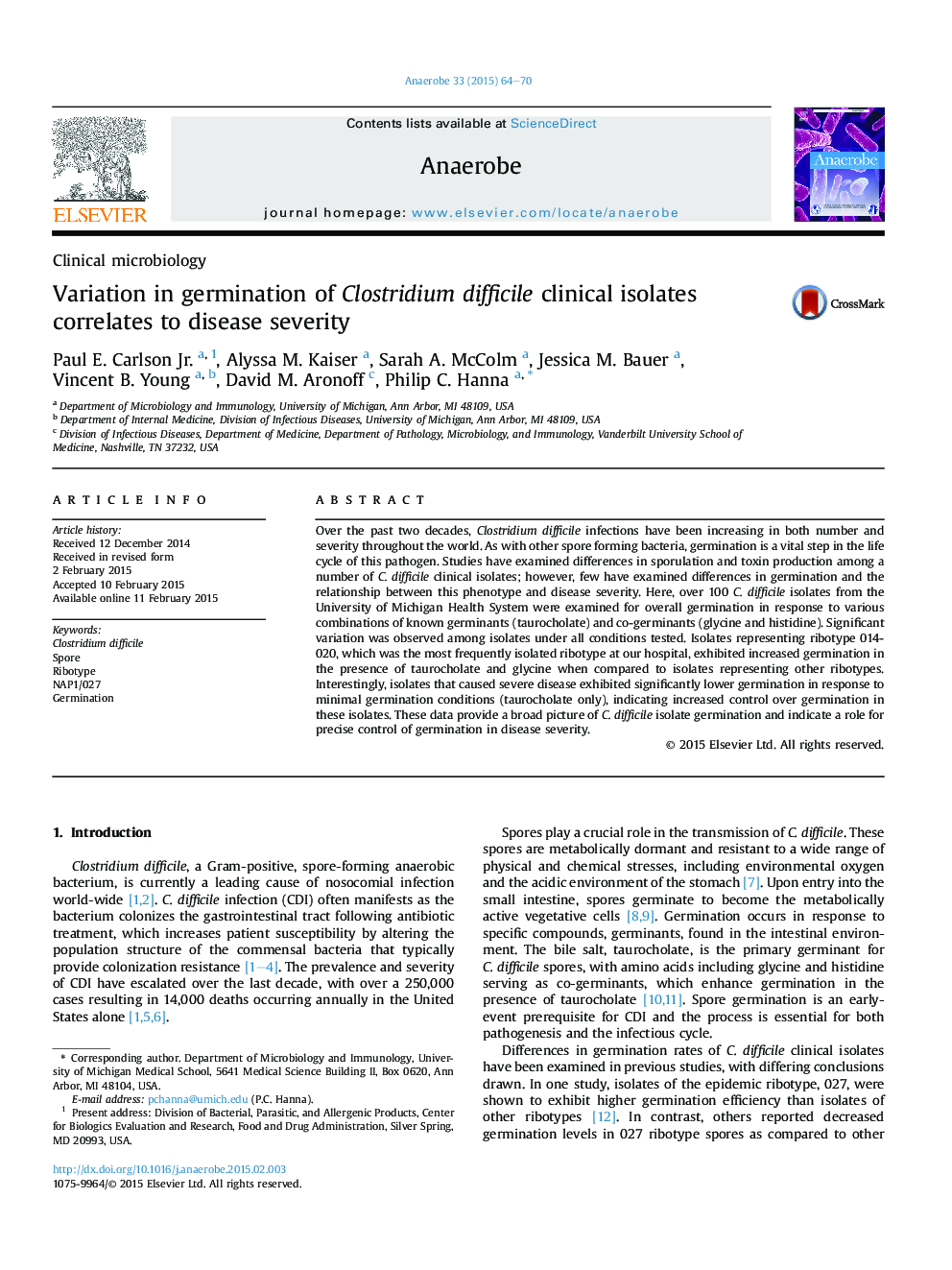| کد مقاله | کد نشریه | سال انتشار | مقاله انگلیسی | نسخه تمام متن |
|---|---|---|---|---|
| 3394893 | 1592830 | 2015 | 7 صفحه PDF | دانلود رایگان |

• Decreased in vitro germination in response to taurocholate along was associated with severe human CDI.
• We have identified an additional correlate of disease severity for this pathogen.
• Isolates representing epidemic ribotype 014 isolates exhibit higher levels of germination in response to taurocholate plus glycine.
• No significant germination differences could be associated with the prevalent ribotype 027.
Over the past two decades, Clostridium difficile infections have been increasing in both number and severity throughout the world. As with other spore forming bacteria, germination is a vital step in the life cycle of this pathogen. Studies have examined differences in sporulation and toxin production among a number of C. difficile clinical isolates; however, few have examined differences in germination and the relationship between this phenotype and disease severity. Here, over 100 C. difficile isolates from the University of Michigan Health System were examined for overall germination in response to various combinations of known germinants (taurocholate) and co-germinants (glycine and histidine). Significant variation was observed among isolates under all conditions tested. Isolates representing ribotype 014-020, which was the most frequently isolated ribotype at our hospital, exhibited increased germination in the presence of taurocholate and glycine when compared to isolates representing other ribotypes. Interestingly, isolates that caused severe disease exhibited significantly lower germination in response to minimal germination conditions (taurocholate only), indicating increased control over germination in these isolates. These data provide a broad picture of C. difficile isolate germination and indicate a role for precise control of germination in disease severity.
Journal: Anaerobe - Volume 33, June 2015, Pages 64–70